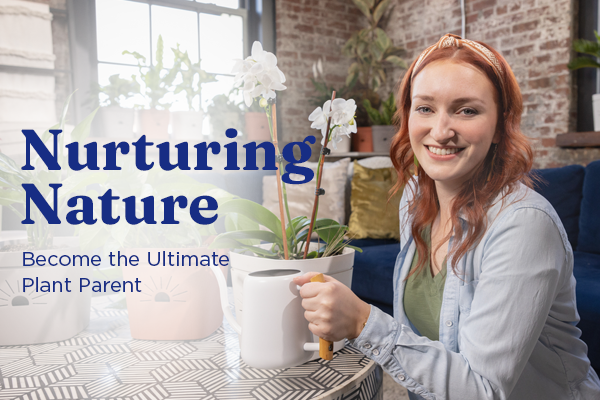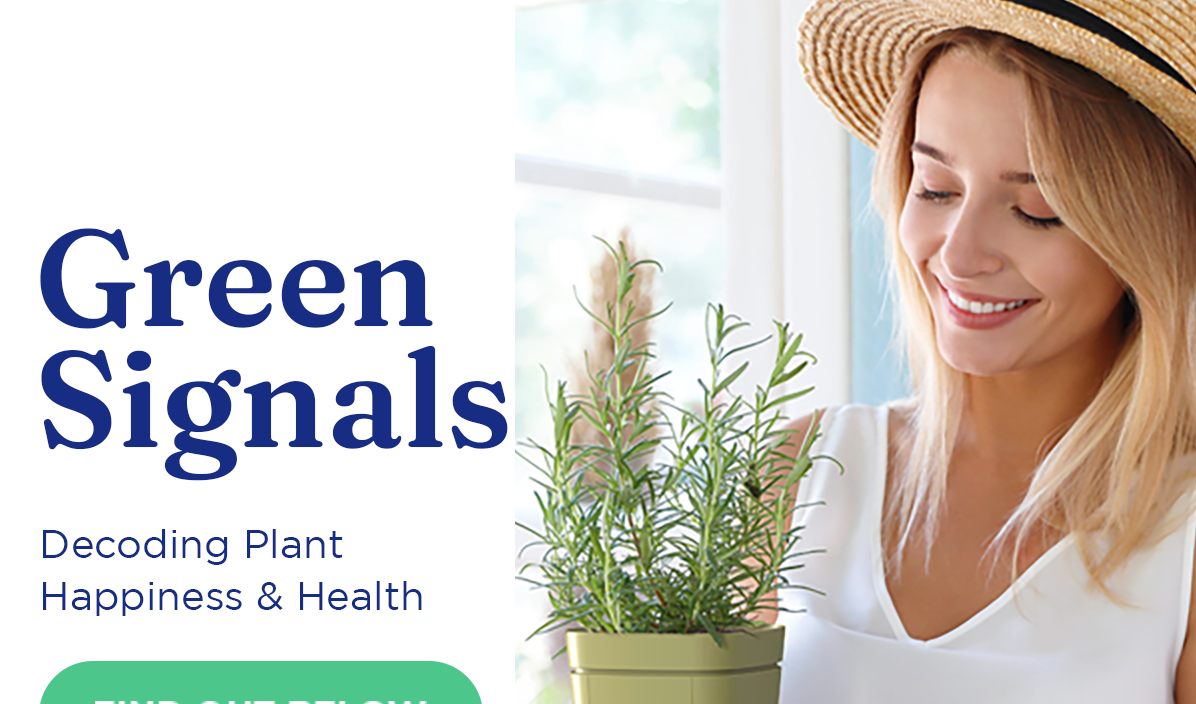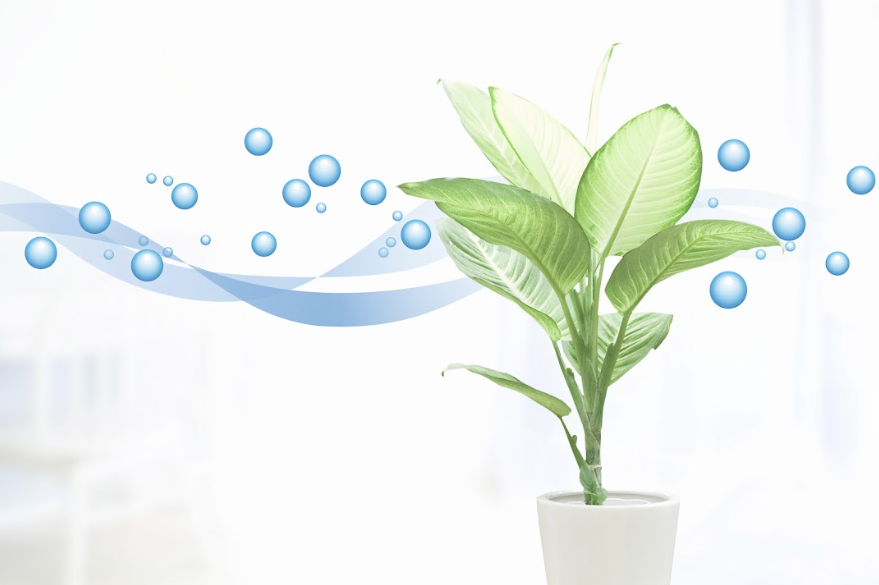Origins
Fittonia (nerve plant) is a genus of flowering plants in the acanthus family Acanthaceae, native to tropical rainforest habitats in South America, particularly Peru. The most popular Fittonia species for houseplants are F. albivenis and its cultivars. They are spreading evergreen perennials that grow 4–6 inches tall and produce lush green leaves with accented veins. On their stems, they have short fuzz-like hairs covering them. These attractive plants make great additions to any garden or houseplant collection due to their low maintenance requirements and easy care needs.
Fitonnia is commonly called the painted net leaf plant, mosaic plant, and nerve plant. In the rainforest, they are understory plants growing in dappled sunlight and luscious soil. The closer you can get to recreating this environment indoors, the happier they will be.
Light
Requirements
It is important not to put a nerve plant in direct sunlight, as too much light can make the veins of the leaves appear bleached and, in extreme cases, can make the leaves fall off. Provide the plant with medium to bright indirect light to get the best results. In the northern hemisphere, a north-facing windowsill will work. You can also put them in an east or west facing window as long as they are 36 inches away from the glass.
Genus Summary
| GENUS | Fittonia |
| COMMON NAMES | Nerve Plant, Mosaic Plant |
| LIGHT | Medium |
| WATER SCHEDULE | 7 days |
| WATER REQUIREMENTS | Keep the soil evenly moist but not soggy. |
| HUMIDITY | High |
| TEMPERATURE | 60-75°F |
| FEEDING | 1x month |
| TOXICITY | Non-toxic to animals and humans. |
| PESTS | Aphids and thrips |
| DISEASES | Root rot fungi and nerve plant mosaic virus. |
| POT | A pot with maximum aeration and a watering reservoir |
| SOIL | African violet potting mix. |
| FERTILIZER | Once per month with a 5-5-5 (half strength) in spring and summer. Never in fall or winter. |
| PROPAGATION | Stem cuttings. |
| PRUNING | Prune the stems when they become long and leggy in order to keep the plant bushy. |
| SIZE | 2 inches to 18 inches. Most common six. |
Water Requirements
When using a Naked Root planter, you can use a 7-day schedule when watering your Fittonia.
When it comes to watering your Fittonia, it is important to find a balance between too much and not enough. The soil should be kept evenly moist like you would wring out a sponge. Overwatering can cause the plant’s roots to rot, leading to stunted growth or even death of the plant. To avoid this situation altogether, make sure that the pot has drainage holes so that any extra water can escape instead of pooling in the bottom. If you’re unsure when to water your Fittonia, touch the top inch of soil – if it feels dry, then it’s time for another drink! During wintertime, when growth slows down naturally (due to lower temperatures and less daylight), you will need to water less frequently.
Humidity
Nerve plants (Fittonia) are tropical evergreen perennials that prefer high humidity to thrive. The most effective way to provide the right amount of dampness is to use an indoor house plant humidifier since these devices can help maintain a consistent level of moisture in your home. This particular genus prefers an atmosphere with 50-70% humidity and will benefit from daily misting. To ensure your Fittonia remains healthy and happy, monitor its environment regularly and adjust the settings on your humidifier accordingly. Brown leaf edges or curling leaves are a sign that the air is too dry.
Temperature
The Fittonia plant is a tropical species and should be kept in an environment with temperatures between 60-75°F. The ideal temperature for this species is 70°F. However, it can tolerate slightly higher or lower temperatures depending on the humidity of the environment. If temperatures reach over 75°F in summer, then it may be beneficial for the plant to move outside into a shaded area. However, any temperature below 50°F will result in the death of the plant, as it is not tolerant of frost in the slightest.
Toxicity
Fittonia is non-toxic to humans and animals.
Pests and Diseases
Aphids tend to be the primary pest found in juvenile Fittonia plants as they gravitate towards new growth. To contain the problem, remove the affected plant from the vicinity of other houseplants. If the weather permits, bringing the plant outside and giving it a strong spray of water should be enough to get rid of the aphids.
Thrips are so small that they may not be easy to detect with the naked eye. If you notice a silvery sheen on the foliage of your plant, this could be caused by these pests consuming the plant and leaving behind their dusty excrement. To get rid of the infestation, you can try placing the plant outside to attract predators like parasitic wasps and lacewing larvae. If the problem persists, you may have to use neem oil, insecticidal soaps, or pyrethrin.
Fungi in overly moist soil can cause root rot, which is the main disease that affects Fittonia plants. Signs of this condition include a soft, mushy stem, wilting, and rotten roots. If the plant still has some white, fresh roots, it can be revived by cutting off the rotted parts and replanting the healthy parts into a pot of dry soil.
The nerve plant mosaic virus has the ability to enter cells and spread throughout the entire plant, causing the infected tissue to die. It is a highly contagious disease that can spread through contact with other plants, so it is important to dispose of any affected plants right away as there is no cure. Symptoms of this virus include blotchy mottling on foliage, distorted leaves, and yellow discoloration. To prevent future outbreaks, clean pruning shears and gloves between plants.
Pot
Because root rot is the most common disease to kill a Fittonia plant, a pot with root zone aeration is recommended for prevention. A pot with a water reservoir is also handy, as nerve plants require frequent watering.
Soil
For an ideal growing environment for Fittonia plants, use a potting mix that has good drainage but also stays slightly moist. To achieve this, you can mix peat-based soil with perlite or use an African violet potting mix. If the drainage is poor, you can add some coarse sand to the mixture. It is essential to prevent too much moisture in the soil. If you see drooping yellow leaves or mushy stems, this is a sign of overwatering.
Fertilizer
During the spring and summer months, give your Fittonia plants a liquid fertilizer specifically made for tropical houseplants. A 5-5-5 fertilizer works well but should be mixed with water at half its strength so the roots don’t get burned. Feed Fittonia once per month during the growing season and not at all in fall and winter.
Propagation
Once you trim your Fittonia, you can use the pruned pieces to propagate more of these nerve plants. Cut a stem at a leaf node, making sure it is at least a few inches long. Discard the bottom leaves and place the stem into a glass of water. Roots should emerge within a few weeks. Once the roots have developed, transfer them to fresh potting soil.
Pruning
For Fittonia plants, when they become tall and unruly, it’s best to give them a trim. Cut the plant back to your desired height, and make sure to do so at a leaf node. This will help it become bushier. The stem tip cuttings can also be used to grow another Fittonia plant.
10 Striking Varieties and Cultivars
Every cultivar and variety of Fittonia is beautiful. They are grown for their delicate, colorful leaves with bright veining. Here are a few of our favorites!
Fittonia’ Crinkle Red’ – This Fittona is an incredibly attractive cultivar that makes a stunning addition to any plant collection. Its dark green oval leaves have bright pink and red veins, adding a delightful splash of color. It grows three or four inches tall and prefers medium to low light conditions – no direct sunlight! This variety requires excellent air circulation for optimal health, so it needs plenty of room to breathe. Additionally, it is more tolerant of low moisture and humidity than some other Fittonias, making it ideal for those who struggle with getting the water just right. Careful attention should be paid to the amount of water given, as this plant can quickly succumb to root rot if too much moisture is present.
Fittonia Albivenis’ Bambino’ – This small nerve plant has bright green leaves that are narrow and ovular. The veining is thick and bright white. New leaves grow in lime-green and darken with age. This tiny specimen makes a great addition to a terrarium or bottle garden. It thrives in low light levels and requires high humidity.
Fittonia Pink Angel – If you love pink, this is the nerve plant for you. It has dark emerald green leaves that are oval-shaped and pointy. The veining is so thick and bright pink that it nearly covers the entire leaf. Each leaf is trimmed in green around the edge for a striking contrast. This variety can grow six inches tall, and each stem can reach 18 inches long if untrimmed. It enjoys even moisture and high humidity.
Fittonia ‘Josan’ – This Fittonia cultivar has green leaves of varying sizes. Some of the leaves are tiny and oval, and some are 6 inches long and elongated. Adding to the look are bright veining patterns in gold, red, pink, and bronze. The total effect is a chaotic mixture of colors and leaf shapes that catches the eye and reflects the light. Josan grows up to a foot wide and tall.
Fittonia Albivenis’ Mosaic’ – This Fittonia will brighten up any shady corner. It has a massive quantity of candy apple red oval leaves. The veining is hunter green. It usually stays between three and six inches tall and wide but has been known to grow trailing stems up to 18 inches long if allowed to sprawl. Regular trimming will keep it bush and luscious.
Fittonia Albivenis’ Skeleton’ – This cultivar features bright green leaves that are of many sizes. Some are half an inch, and some are four inches long. Each leaf has scalloped edges and bright magenta veins. It stays a tidy 3-6 inches and is a good choice for a terrarium.
Fittonia Mosaic White Tiger – White tiger has bigger leaves than many other Fittonias. They are both wider and longer, growing 2 inches by 2 inches. The leaves are dark emerald green with thick white veining. From a distance, the plant looks nearly all white, with green leaf edges. It grows 6 inches tall, and the stems will continue growing to over a foot if left untrimmed.
Fittonia Verschaffeltii’ Red Anne’ – This Fittonia cultivar has textured furry leaves that feel like velvet. The leaves are olive green with fine red veins. The stems are covered in soft white hairs. This cultivar requires high humidity and even moisture and cannot handle direct sunlight. It is a nice tidy four inches tall when mature.
Fittonia Verschaffeltii
‘Fortissimo’ – This cultivar is nicknamed bubble red. It has small leaves of dark green. The veining is reddish pink and not as prolific as other cultivars, leaving the leaf mainly green. This Fittonia grows four inches tall and requires consistent moisture to thrive.
Fittonia Albivenis’ Skeleton Big Leaf’ – As promised, this Fittonia has large six-inch long veins in electric lime green. The pink veining against the chartreuse has a bold effect. This is one of the more easy-going Fittonias, adapting well to different water, light, and humidity levels. It grows six inches tall and will creep along and spread within its pot.
Summary of Fittonia Plant Care
Fittonia (nerve plant) is a moisture and humidity-loving plant that thrives in a terrarium environment or near a humidifier. If you can provide consistent moisture without waterlogging the soil, you will be rewarded with an incredible display of bright leaves with colorful veins. Fertilize with a half-strength liquid food once per month during the growing season, trim the plants if they get too leggy, and keep the temperature around 70°F.


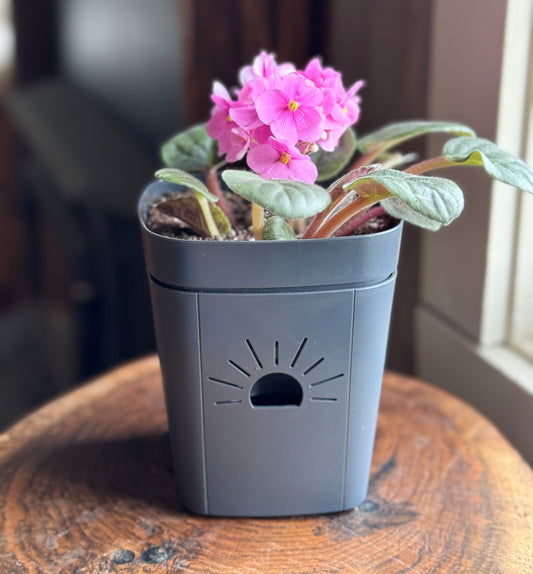
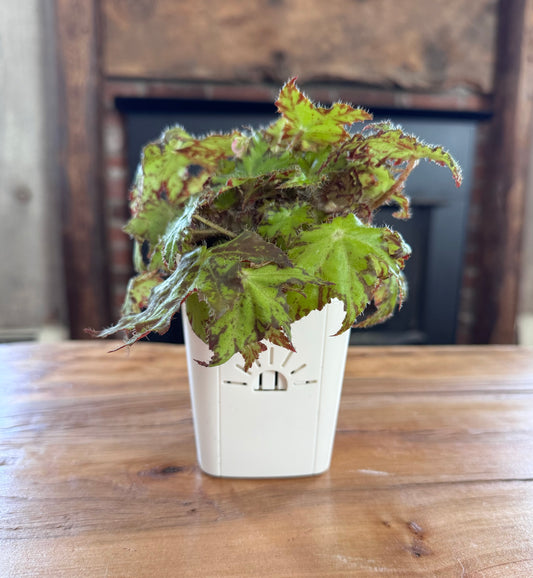

 Verified Buyer
Verified Buyer







